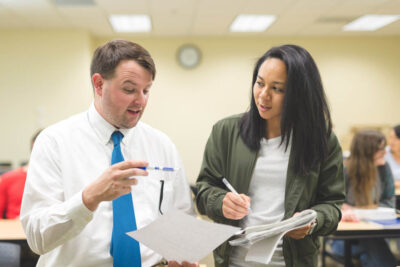3 Recommendations for Your 2023-24 Annual Giving Strategy
Lasting Lessons from the Pandemic for Advancement Teams
June 12, 2023, By Mark Shreve, Managing Director, Partner Development
In May 2023, the World Health Organization (WHO) officially declared the end of the global health emergency caused by the COVID-19 pandemic—leading President Biden to end the U.S.’s national emergency response.
At this point, it’s well understood that the pandemic significantly influenced donor behavior, prompting individuals to reconsider where, why, and how they contribute to causes and organizations. In response, Advancement teams had to think beyond their traditional approaches and find new ways to engage and retain their donors. This led to annual giving strategies that incorporated virtual elements, unique messaging approaches, deployment on new digital platforms, and much more.
1. Think beyond local proximity to your institution
During the pandemic, video conference platforms played a vital role in maintaining personal and professional connections in spite of physical distance. Advancement teams were tasked with finding new virtual ways to connect with donors, including innovative initiatives such as alumni fireside chats, online fundraising events, virtual 5ks, and more.
-
Examine Your Strategy
EAB research shows that new donors need an average of eight touchpoints before making their first gift. Explore our resources on auditing your existing engagement strategy.
-
Watch The Webinar
As you move into budgeting and strategy planning for the next fiscal year, view our on-demand webinar on making the case for your annual giving budget.
Integrating virtual opportunities as a supplement to traditional, in-person events and activations is a powerful way to engage more donors. While we have moved beyond the days of solely virtual interactions, incorporating both in-person and virtual touchpoints expands institutions’ reach, providing more opportunities for alumni and donors to engage. This hybrid model can help foster a stronger community of supporters that exist beyond the close proximity to your campus.
While incorporating virtual opportunities into your annual giving strategy will likely increase your team’s workload, it’s a key tactic in ensuring widespread reach of your initiatives and maximizing your fundraising potential—especially while budget pressures and revenue goals increase.
2. Create relevant, shareable digital content
Along with the switch to virtual gatherings during the pandemic, we saw user behavior change across social media platforms. Users were creating and sharing content rooted in real-life stories of resilience, acts of kindness, community support, and educational resources. This trend not only facilitated meaningful connections amongst communities but also enabled organizations and institutions to join in on the conversations and reach a broader audience.
-
26% Growth in Online Giving In Recent Years
Engaging donors and alumni with impactful digital content is crucial to capturing their attention, establishing relevance in their lives, and fostering meaningful connections that can lead them to donating to your institution.
Based on the widespread contributions to crisis support we saw during the pandemic, we know that donors are eager to support organizations that make a real, tangible impact on people’s lives. Showcasing the unique stories and people of your institution is key to highlighting the impact individuals can make when they donate. Plus, the more a piece of content resonates with someone, the more likely they will be to want to share it with their communities.
In addition to creating your own content, leveraging user-generated content can be a powerful way to expand your digital footprint. Encouraging donors and alumni to share their own stories and experiences with your institution can create a sense of community and authenticity.
Continuing to create and share impactful digital content is key to expanding your digital presence and ultimately driving support for your institution.
From alumni relations to athletics to central marketing, your donors and alumni are receiving a lot of communication from different areas of your institution. This can often lead to a confusing and disjointed experience.
During the pandemic, university departments made greater effort to work together to adapt to virtual environments, pool their resources, and communicate effectively to their audiences in a time of global chaos. This collaborative approach can help maximize your impact and create a more seamless and meaningful experience for donors and alumni.
While it can be an uphill battle to break down internal barriers, it’s crucial Advancement teams continue to grow collaboration efforts with other departments that are already engaging with your audiences. By working together, you can ensure a more consistent and cohesive experience for donors and alumni, strengthening their connection with your institution and fostering more meaningful engagement.
-
Personalization is Key
Collaboration with your campus partners is key and can lead to better overall experience for your donors. EAB research shows that 80% of donors want to receive content personalized to them before they make a gift.

More Blogs

4 stewardship principles to deepen donor relationships

How to keep donors engaged during an election year
